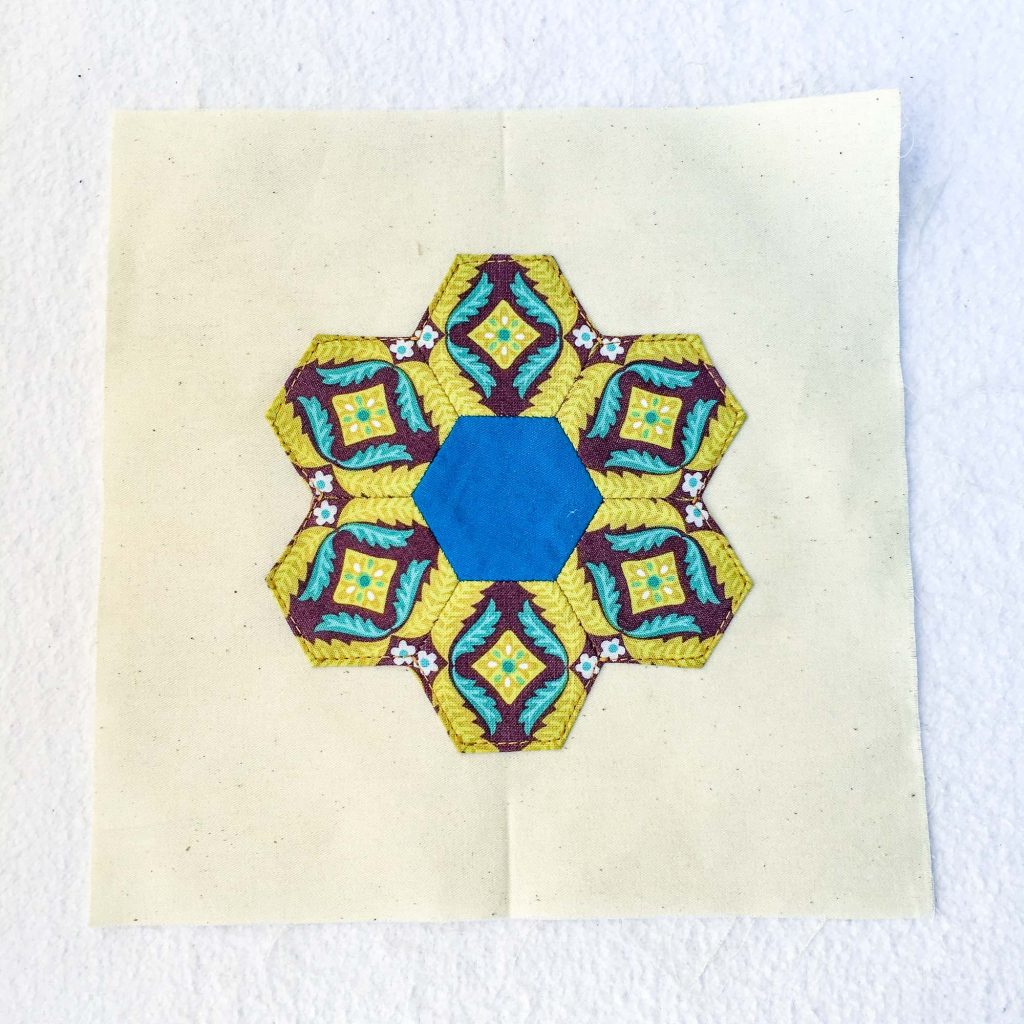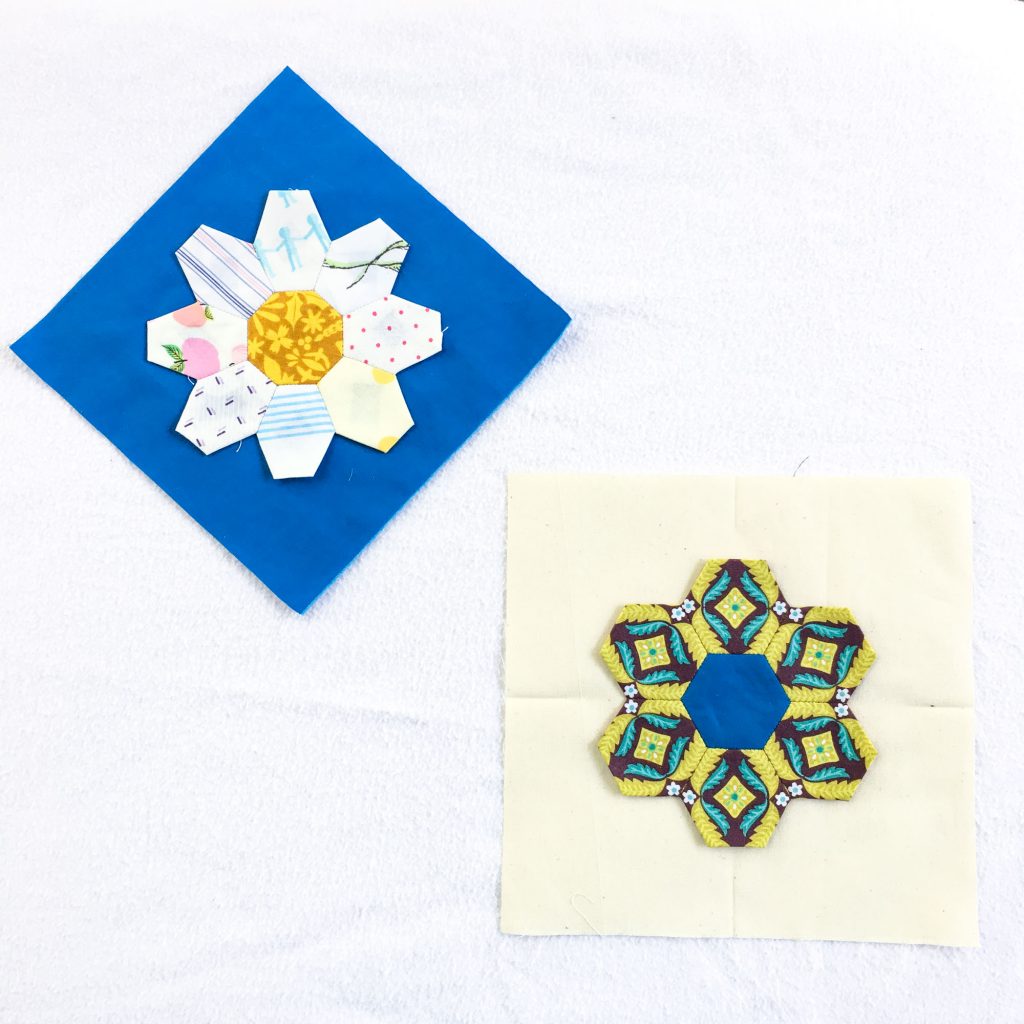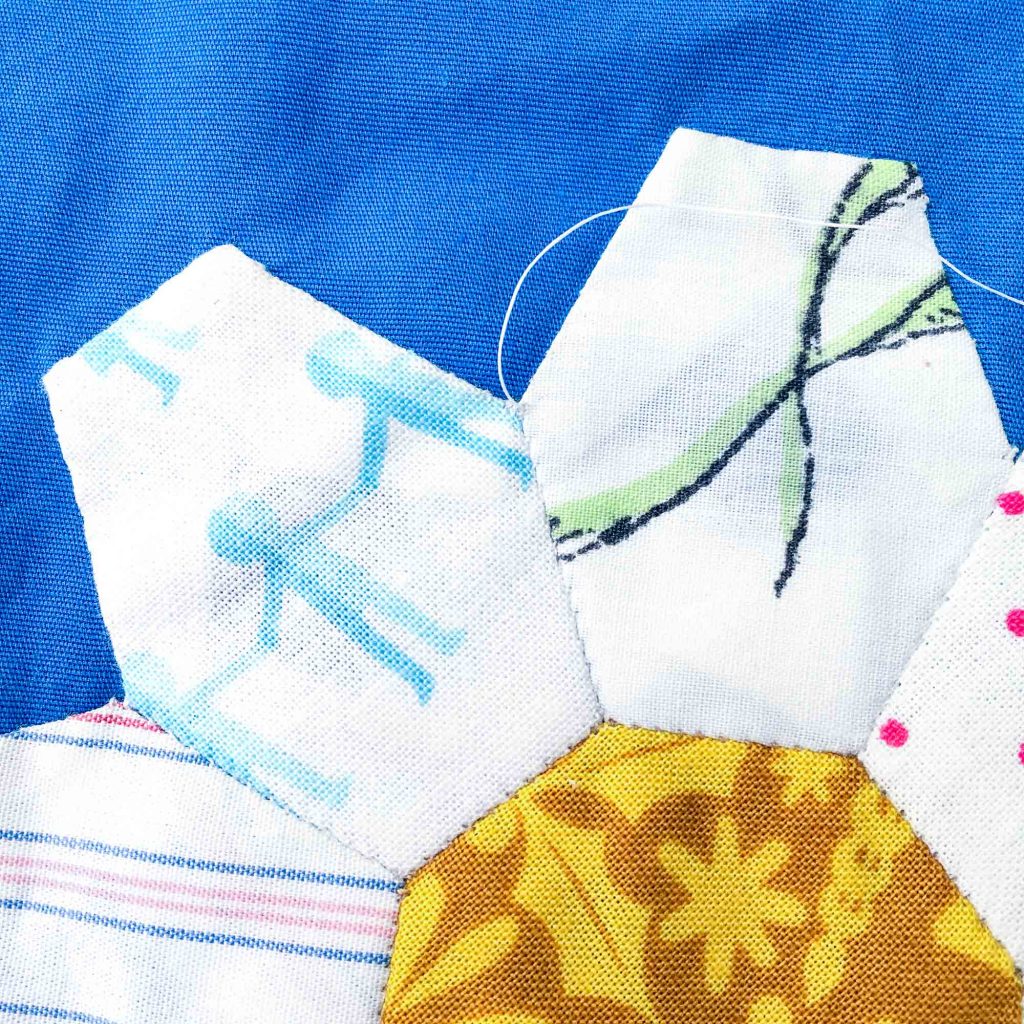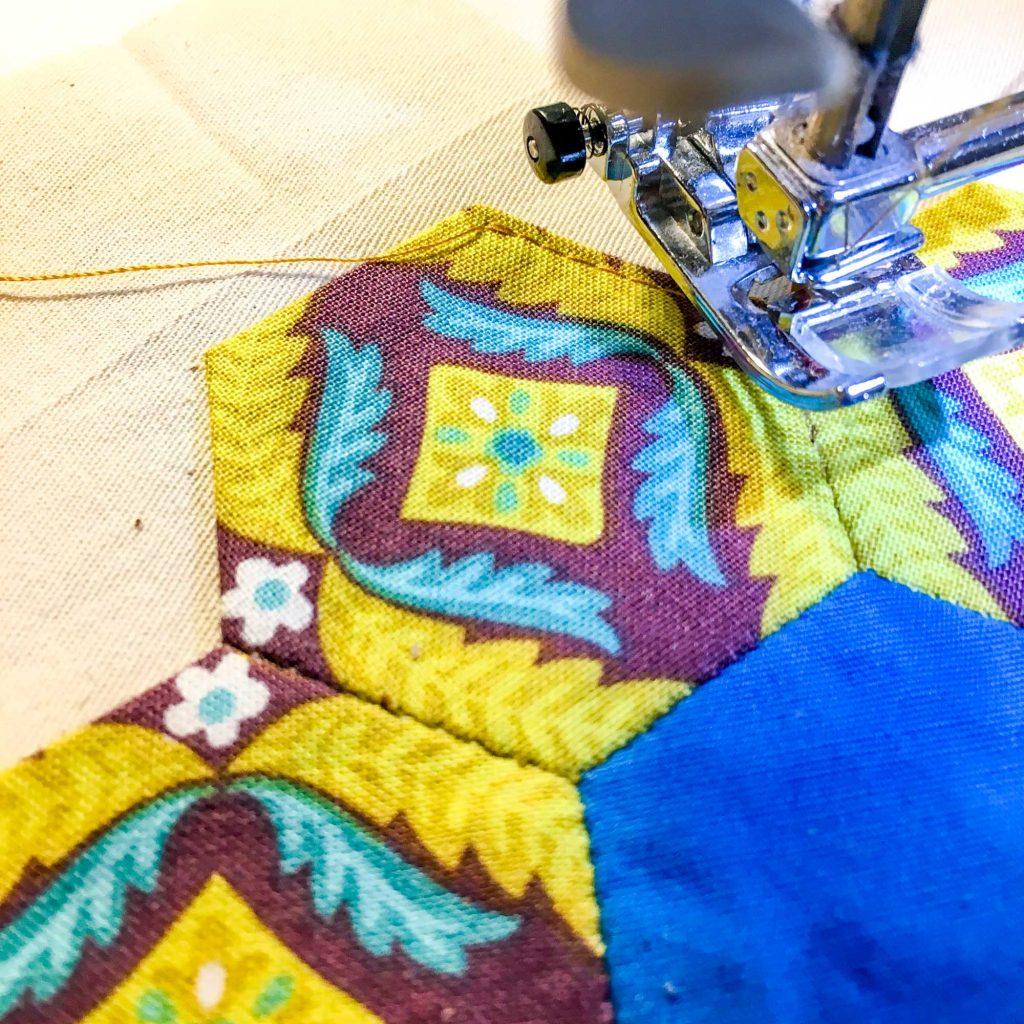I discovered how perfect a pairing English paper piecing (EPP) and applique are a few summers ago, when I participated in the Kingfisher stitchalong hosted by Jodi Godfrey of Tales of Cloth and Rachel Hauser of Stitched in Color. Since then, I have enjoyed adding EPP embellishments to projects, as well as stitching quilts that combine EPP with applique for a faster finish.
One of my favorite elements of applique is that it can be done by hand or machine. Always one to insert hand stitching wherever possible, hand applique is my preferred method. However, I appreciate having machine applique in my sewing repertoire for those occasions where it proves helpful. As such, this applique tutorial demonstrates how to applique both by hand and machine. (P.S. If you’re new to EPP, you can find out all about it in the EPP Primer. Just click here.)
So, let’s get started!
Hand Applique
First up is hand applique. I love the portability of hand applique, much as I enjoy the portability of EPP. You can prep several blocks at a time and then, using the same basic set of supplies as EPP, you’re ready for a ride in the car, a cozy evening around the fire, or a pleasant afternoon in the back yard. So, let’s get to it!
One last thing before we begin. I have endeavored to create as aesthetically pleasing a layout as possible with this post in order to enhance readability. As such, desktop users will notice that each step of the tutorial is staggered with an alternating text block and image. If the images appear too small at any time, simply click on the image and a full scale version will pop up.
2. Baste it to the background using pins or glue. (I prefer glue because I don’t like poking myself with the pins as I work!) You can use an applique glue, simple glue stick, or washable white liquid school glue (my preference). (Elmer’s is my favorite, but I’ve used other generics as well, just make sure they are washable.)
5. Next, grab your needle, and thread it as you would for EPP, being sure to knot it at the end. (I use the very same needle for applique as I do for EPP – a Milliners number 9.) Try to choose a color thread that blends with the EPP block, rather than the background fabric.
8. Insert the needle into the background fabric directly across from where it exits the EPP block’s fabric. (This creates the least visible stitches as you go along.) In the same motion, bring the needle back up through the background fabric and into the EPP block’s fabric right at the edge of the fabric, about 1/8” away from where your whip stitches where taken. Pull the thread through, and pull taut.
Woohoo! You’ve hand appliqued an EPP block!

This block is from my Daisy Jane Quilt pattern, releasing soon! Be sure to subscribe to the monthly newsletter HERE so you’re the first to know when it does and receive a special discount code just for subscribers!
Machine Applique
As I mentioned at the beginning of this post, I appreciate having machine applique in my sewing arsenal. It’s similar to my sentiments about quilting. As much as I prefer hand quilting, I’m glad to know how to quilt by machine. The same goes for applique. So, here’s how I applique by machine.
2. Baste it to the background using pins or glue. (I prefer glue because I don’t like poking myself with the pins as I work!) You can use an applique glue, simple glue stick, or washable white liquid school glue (my preference). (Elmer’s is my favorite, but I’ve used other generics as well, just make sure they are washable.)
Woohoo! You’ve machine appliqued an EPP block!

Removing the Background Fabric
At this point, each of these blocks is ready for incorporation into its final project. However, sometimes, as in the case of the Daisy Jane block, the appliqued fabric is lighter than the background fabric and the background fabric shows through. This isn’t a problem as much as it is a matter of personal preference. I prefer not to see the background fabric through the EPP block, so I am going to carefully remove it.
Some folks routinely perform this next step to reduce weight or bulk in the final quilt. I generally don’t do it unless the background is higher contrast than the applique fabric as I’ve mentioned here. If you’d like to learn how to remove the background fabric, follow the steps below.
Of note, this can be done with machine or hand appliqued blocks. For the purposes of this tutorial, I will be using the hand appliqued sample.
2. Using VERY sharp tip scissors (I love these Fiskars), take a small clip into the background fabric about a 1/4” INSIDE the stitching line. Of note, taking this initial clip near one of the inner points can be a bit easier to manage than inside a petal.
3. Insert the scissors into the clipped hole and VERY carefully begin cutting the background fabric ONLY, following the stitching line about a 1/4” away from it. (I usually just eyeball it, but feel free to draw a line to follow if you prefer.) Take EXTREME care not to knick or catch the EPP fabric.
You're off to applique!
I hope that you’ve found this EPP applique tutorial helpful. Are you ready to give EPP applique a try? If so, you can have my FREE printable hexagon templates in 2″, 1″, 3/4″, and 1/2″ sizes delivered straight to your inbox to get started right away! (Be sure to check out one of my favorite EPP Hacks for cutting out these templates in this post!)
If you’re new around here, be sure to check out my other beginner friendly tutorials here. You can also subscribe to the blog at the bottom of this page and you’ll be the first to know when a new tutorial goes live! In the meantime, happy stitching!
Don’t forget that you can always pin this post to Pinterest for easy access later.































3 Responses
Thanks so much! Interested in EPP!
Thanks for the info. I want to use batting under the EPP applique so it stands out more. Any tips on how to do this by machine or by hand?
Hello! I’m so sorry for the delay in response. It turns out there was a notification glitch we just corrected… As for putting batting under your appliqué, I have not personally done this, but I have quilted around appliquéd motifs right along the edge of the appliqué and it does make it pop up quite nicely. Other than that, there is also a lovely product called “hexiform” that I have used in lieu of the traditional paper piece templates. It is a stiffer batting of sorts that you can cut out and baste just like paper pieces and then stitch your EPP together as you normally would. You leave the hexiform inside (so you don’t even use papers and no pulling pieces required) and the result is a bit more of a raised EPP appliqué motif. I’m not sure if that helps, but I wish you all the best! Feel free to email me at [email protected] with any other questions if I can help. Happy stitching!